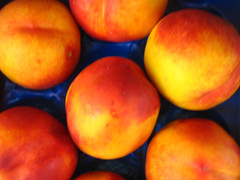With the prominent celebrity deaths this week flooding our many publics, friends are pushing back. Doc writes:
obsessing about celebrity is unhealthy for the single reason that it is also unproductive. Celebrity is to mentality as smoking is to food. (I originally wrote “chewing gum” there, but I think smoking is the better analogy.) It is an unhealthy waste of time.
Michael Jackson and other celebs are the replacement for that sort of seriously time consuming difficult religion, because media and post-modernism make it easy [...] If nothing is more important than the individual, but he/she needs to follow something bigger than the self [...] you have the perfect primordial soup to grow the MJ, etc worship replacing organized religion we see now.
I think there are two other components to this - celebrities function both as Jyri's Social Objects the cultural touchstones and shared ideas that we use to bridge our publics, as I have said:
The small number of highly-connected entities that fulfil the role of social objects are sometimes people. If you think about celebrities, they clearly fit- being able to discuss Brad and Jen and Angelina's latest shenanigans binds you in, and shows like American Idol are designed to draw on this need, giving the Faustian bargain of fame in exchange for objectification.
This week, research was published confirming this:
"The very experts who could kind of inform everyone else don't. They actually keep feeding them the information they already know because that helps establish a connection," Nathanael Fast says.
If this whole argument seems circular, that's the point. Prominent people stay popular for longer than they ought to because they serve as conversational fodder, which in turn drives more media coverage.
"Take Paris Hilton, somehow or another she became well known and now people are more likely to talk about her," Fast says.
This supports Duncan Watts's experimental work on self-feeding fame.
But there is another component to this as well - that we perceive celebrities as part of our social group - they take up one of the slots we have available for modelling and keeping track of other people. My first experience of this was when I worked at BBC Elstree, and said hi to some oldish chap I recognised in the corridor, later realising that he didn't know me at all - he was Arthur from EastEnders. (Now I've done a bit of public speaking this happens to me in reverse now and then - people who've seen me speak somewhere later on come and say hello, remembering it as a conversation). danah's classic Fakesters discussion touches on this too, with Friendster's symmetric Dunbar assumptions confounded by users wanting to connect through the famous; whereas MySpace and especially Twitter have embraced the fundamental asymmetry of who pays attention to whom in this way.
My take is that while Doc is right about the time-sink of celebrity for it's own sake, which may be an example of losing a useful person-slot to a synthetic creation. Mary's implication that there is a God-slot there is perhaps supported by Robert Wright's argument that the God as human-like role model can have good influences on us.
Certainly, being aware of our own choices of 'fake friends' to act as role models is likely to be better than having to choose them from a limited 20th century media model.






